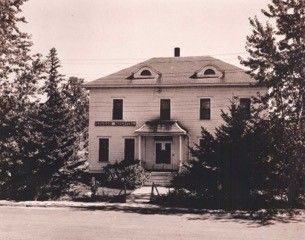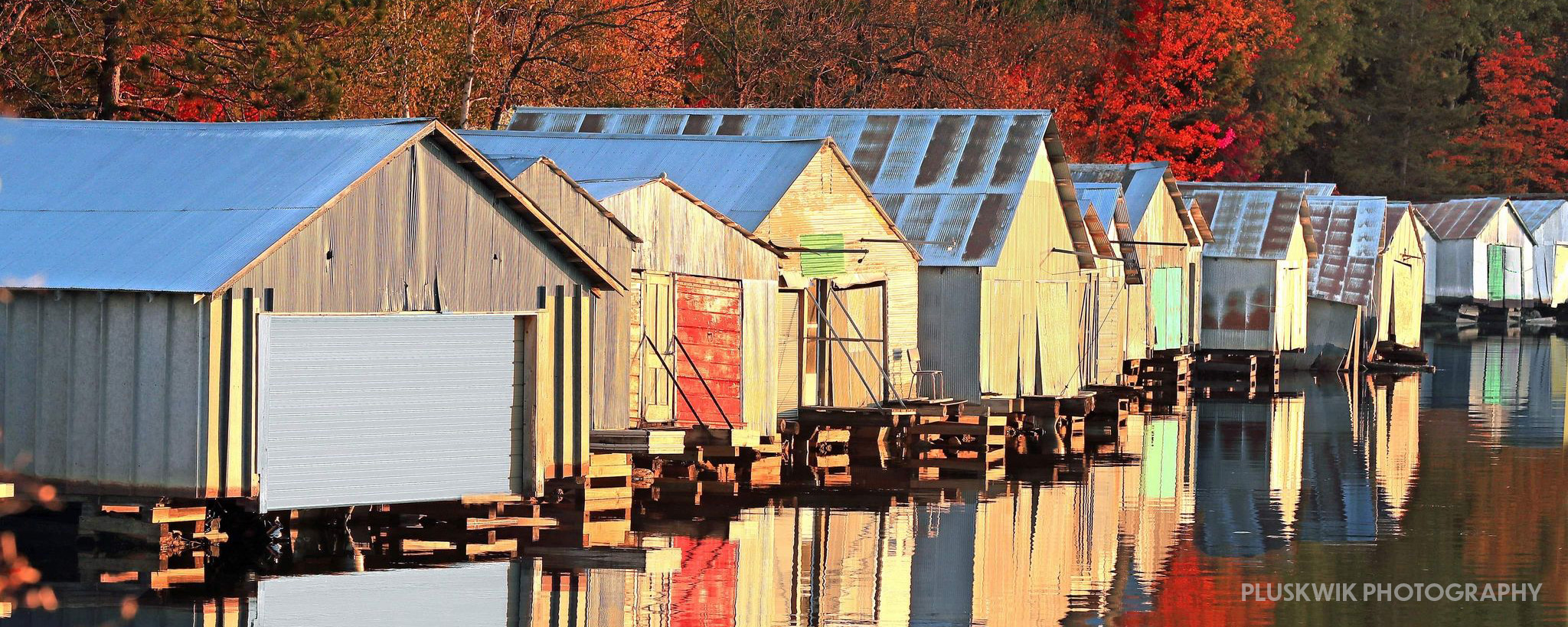Soudan Hospital History
“As near as I can determine, it was built in 1890 by the Oliver Iron Mining Company which was at the same time that the other company buildings were built, namely the mining office, the ore sampling building and the three large company houses which were built along the circle street near the hospital.
The hospital is a two-story frame building with a basement. The first floor consists of the doctor’s office, waiting room, operating room, a small dispensary, washroom, dining room, kitchen and bedroom. A wide stairway leads to the second floor to the right of which was a large dormitory containing single hospital beds. The doctor’s family lived on the left side of the second floor. It also contained a washroom and some more bedrooms. The doctors always employed a cook and several other employees to help take care of the patients.
In the basement there was a steam heating plant and laundry. In those days there was no electric plant, water or sewer. Water was supplied from a well dug on the premises with a hand pump that was operated by a windmill. The windmill pumped the water to a 1000 gallon wooden tank that was installed in the attic. When there was not sufficient wind to run the windmill, the water had to be pumped by hand. There were the usual plumbing fixtures in the wash rooms and they were later connected to the sewer system. The electricity was later furnished from the mine.
The hospital operated by a company doctor and I do not think they charged him any rent. All the company employees were charged a $1.00 per month for the doctor’s services. This was deducted from their pay check each month and paid to the doctor. When the hospital was built there were no sawmills or logging camps here, but as time went on they eventually came. They had the same arrangement with the hospital.
In the early days when the mine, sawmills and logging camps were operating there was a need for doctors and some of them were located in Tower. The early day Tower doctors were Dr. Harwood, Dr. Moore, Dr. Kankel, Dr. Fowler and Dr. Tripp.
Dr. Harwood was the first to come and he had his office over the Hanson store. Dr. Moore had his office in the old McQuade home where Lin Burgess has his home now. I recall when his office was there my brother Sam was working at the sawmill. He fell into a barrel of hot water that was below ground level. He sustained severe burns on his legs and was treated by Dr. Moore.
The following is a list of the doctors that practiced in the Soudan Hospital:
Dr. Richards Dr. O’Leary Dr. Hynes
Dr. Parker Dr. Burns Dr. Benson
Dr. Shipman Dr. Burns, Sr. Dr. Watson
Dr. Jones Dr. Munroe Dr. Laikola
Dr. McMillan Dr. Bollcon Dr. Hartman
Dr. Wunder Dr. Mollers
When the hospital first opened it was for men only and no provision was made to take care of women patients. In those early days not much emphasis was placed on first aid; consequently there were many accidents and numerous deaths. Also, there were many epidemics such as typhoid fever, scarlet fever, small pox and pneumonia. When they broke out, especially in the logging camps, the patients were brought to the hospital and many of them died. Among the deaths were single men who had no known relatives. These were buried in the Potter’s Field in the local cemetery. No records were made of those deaths and burials.
Mr. Olson goes on to cover several doctors who operated the Soudan Hospital, including the last one – Dr. P.T. Mollers, who later, after his first wife died, married a local girl, Marcella Nelson who was a graduate nurse.
“Not long after that he decided to give up his practice here, selling his equipment and moving to Minneapolis. The State Board would not issue a license to operate any more so it was closed. The company then donated the hospital building to the Town of Breitung. They rented it to some Ely doctors who operated a clinic one day a week. This did not work out very well and they gave up the idea. The Town of Breitung then sold the hospital to Mr. and Mrs. Kenneth Pointfield who are operating the Pine View Rest Home there.
This story has been written mostly from memory by the writer because there are no written records available. I want to thank my friend John Helstrom for his help in recalling so much of the early day history. Also thanks to Isabelle Swanson who was employed there for many years.”
Written by Herman T. Olson, TSHS Secretary – February 15, 1972
Herman T. Olson, Tower-Soudan Historical Society Secretary, wrote about the history of the Soudan Hospital. Thank you goes to his granddaughter Lynn Olson for providing TSHS with this information:

